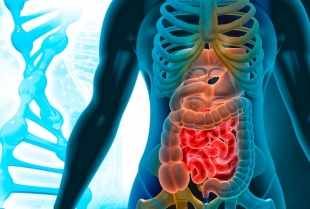The peptide Palmitoyl-AHK (Pal-AHK) has garnered considerable interest within the scientific community due to its unique biochemical properties and potential implications in various research domains.
As a palmitoylated derivative of the tripeptide alanine-histidine-lysine (AHK), Pal-AHK is thought to exhibit distinct characteristics that might support cellular signaling, receptor interaction, and intracellular trafficking in research models.
This article explores the properties of Pal-AHK, examines its possible roles in biological systems, and highlights promising avenues for investigation within research contexts—emphasizing speculative insights drawn from current scientific literature.
Introduction to Pal-AHK Peptide
Pal-AHK is a lipid-modified peptide derived by attaching a palmitoyl group to the N-terminus of the tripeptide AHK. The parent tripeptide, AHK, belongs to a class of peptides involved in growth regulation and cellular signaling, often associated with the modulation of cellular proliferation and homeostasis.
The palmitoylation confers increased hydrophobicity, potentially facilitating membrane association, better-supported cellular uptake, and improved interaction with lipid-rich environments, such as membranes and lipid rafts. This structural modification may impart Pal-AHK with the potential to support intracellular pathways differently compared to its unmodified counterpart, suggesting distinct research relevance.
Molecular Properties and Mechanistic Hypotheses
- Palmitoylation and Membrane Interaction
The addition of a palmitoyl moiety—a 16-carbon saturated fatty acid—to AHK likely increases the peptide’s affinity for cell membranes by promoting insertion into lipid bilayers. Such membrane tethering might localize Pal-AHK near membrane-associated receptors or signaling complexes, thereby modifying its functional engagement compared to soluble peptides.
It is theorized that Pal-AHK may act as a membrane-targeted signaling molecule, supporting signal transduction cascades through direct interaction with receptors or modulating lipid microdomain organization. This attribute may position Pal-AHK as a relevant probe to investigate membrane-related processes such as receptor clustering, endocytosis, or signaling nanodomains.
- Potential Receptor Interactions
While the specific receptor binding profiles of Pal-AHK remain to be fully elucidated, investigations suggest that the peptide may interact with growth factor receptors, G-protein-coupled receptors (GPCRs), or other membrane-bound proteins sensitive to lipid modifications. Its tripeptide core may maintain affinity for certain receptor motifs, while the palmitoyl group supports binding stability or receptor microenvironment localization. Such dual features may facilitate receptor-mediated signaling that supports cellular behavior, including proliferation, migration, or differentiation pathways.
Investigative Implications in Cellular and Molecular Research
- Cell Proliferation and Regeneration Research
The unmodified AHK tripeptide has been associated with cellular regeneration and repair processes in various research models. It has been hypothesized that Pal-AHK may augment or modulate these regenerative properties by supporting cell surface interactions or receptor engagement due to its lipophilic moiety.
Research systems designed to explore wound healing or cellular proliferation may utilize Pal-AHK to dissect the role of membrane-associated peptides in modulating cell cycle progression, cytoskeletal reorganization, or extracellular matrix interactions.
- Signal Transduction Pathways
Given its membrane-targeting potential, Pal-AHK is thought to support key intracellular signaling pathways by facilitating proximity supports between signaling proteins. Research models investigating pathways such as MAPK/ERK, PI3K/Akt, or NF-κB may be applied to Pal-AHK to understand how lipid-modified peptides alter signal amplification, duration, or spatial organization within the cell. This approach may yield insight into the interplay between lipid modifications and signal transduction fidelity, possibly revealing novel regulatory mechanisms.
Potential Impact on Immunological Research
The immune system’s responsiveness often depends on the spatial and temporal organization of receptors on the membranes of immune cells. It has been theorized that Pal-AHK may modulate immune cell function by altering receptor dynamics or signaling thresholds within immunological synapses.
For instance, the peptide’s potential to associate with membranes might support T-cell receptor clustering, antigen presentation processes, or cytokine receptor signaling. Research in this domain may explore Pal-AHK as a modulator of immune activation or tolerance, potentially contributing to a better grasp of immune regulation mechanisms.
Implications in Neuroscience and Neuroprotection Research
Although direct data regarding Pal-AHK in neural systems are limited, theoretical models suggest that its membrane-targeting properties may be harnessed to modulate neuronal signaling pathways. Given that palmitoylation is a common post-translational modification involved in synaptic protein trafficking and function, Pal-AHK might mimic or interfere with such processes.
Research models investigating synaptic plasticity, neuroinflammation, or neurodegeneration may leverage Pal-AHK to assess its potential support for neuronal survival pathways, receptor localization, or neurotrophic signaling cascades. This may provide a new molecular tool for dissecting complex neuronal interactions or protective mechanisms.
Potential Roles in Metabolic and Endocrine Research
Pal-AHK’s structural similarity to peptides implicated in metabolic regulation suggests possible involvement in energy homeostasis or endocrine signaling. While speculative, it has been hypothesized that Pal-AHK might support receptor systems associated with metabolic hormones or neurotransmitters, such as insulin receptors or hypothalamic neuropeptides.
Research models addressing metabolic signaling pathways may employ Pal-AHK to unravel how palmitoylated peptides interact with membrane-bound hormone receptors, potentially modulating downstream cellular responses linked to nutrient sensing or energy balance.
Conclusion
Pal-AHK peptide represents a compelling molecular entity with multifaceted properties derived from its palmitoylated structure and tripeptide core. The peptide’s probable potential to associate with membranes, modulate receptor interactions, and support intracellular signaling pathways makes it a valuable candidate for diverse research domains ranging from cell biology and immunology to neuroscience and metabolism. Visit Biotech Peptides for the best research materials available online.
References
[i] Fukata, M., & Fukata, Y. (2010). Protein palmitoylation in neuronal development and synaptic plasticity. Nature Reviews Neuroscience, 11(3), 161–175. https://doi.org/10.1038/nrn2780
[ii] Linder, M. E., & Deschenes, R. J. (2007). Palmitoylation: Policing protein stability and traffic. Nature Reviews Molecular Cell Biology, 8(1), 74–84. https://doi.org/10.1038/nrm2084 Wiley Online Library+15
[iii] Wan, J., Roth, A. F., Bailey, A. O., & Davis, N. G. (2007). Palmitoylated proteins: Purification and identification. Nature Protocols, 2(7), 1573–1584. https://doi.org/10.1038/nprot.2007.225
[iv] Han, J., & Zhang, L. (2024). Protein palmitoylation: Biological functions, disease associations, and therapeutic potential. MedComm, 5(2), e70096. https://doi.org/10.1002/mco2.70096
[v] Cheng, W.‑X., Ren, Y., Lu, M.‑M., et al. (2021). Palmitoylation in Crohn’s disease: Current status and future directions. World Journal of Gastroenterology, 27(48), 8201–8215. https://doi.org/10.3748/wjg.v27.i48.8201




